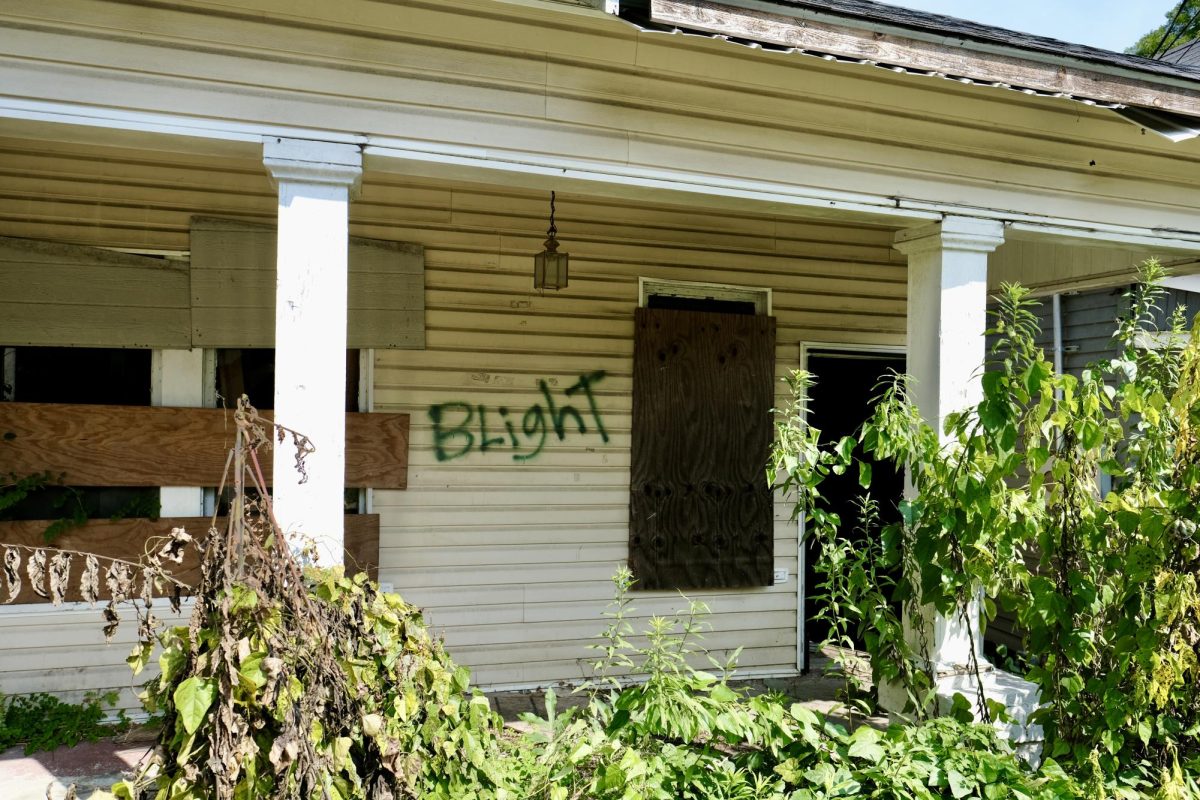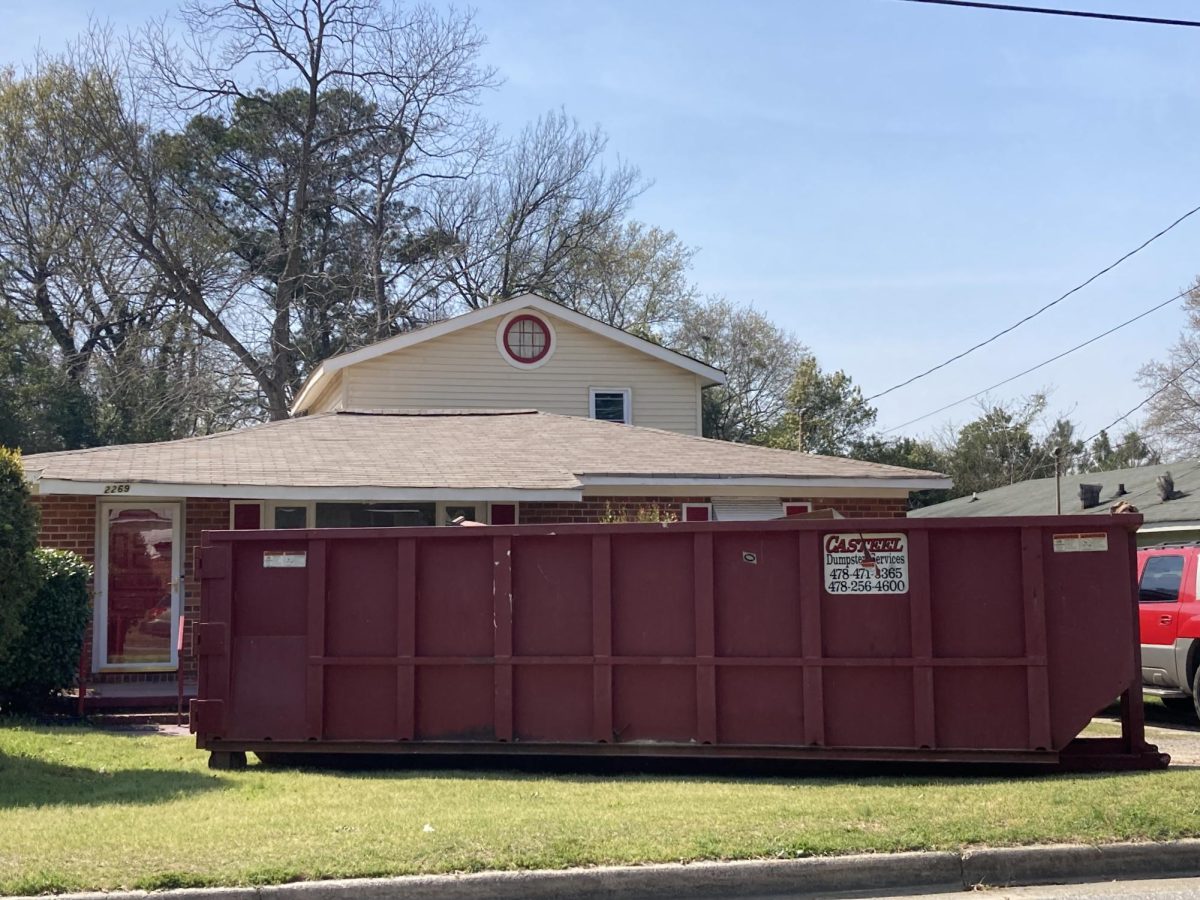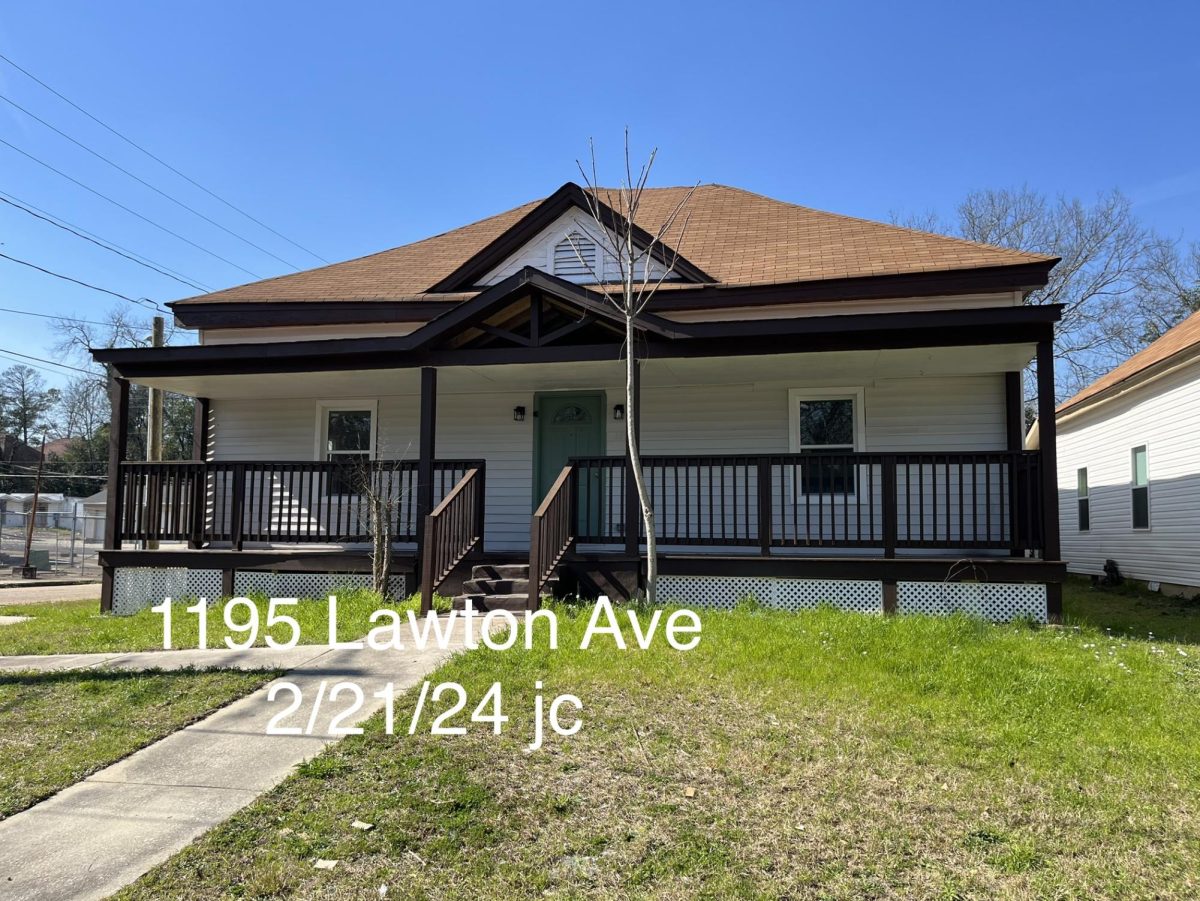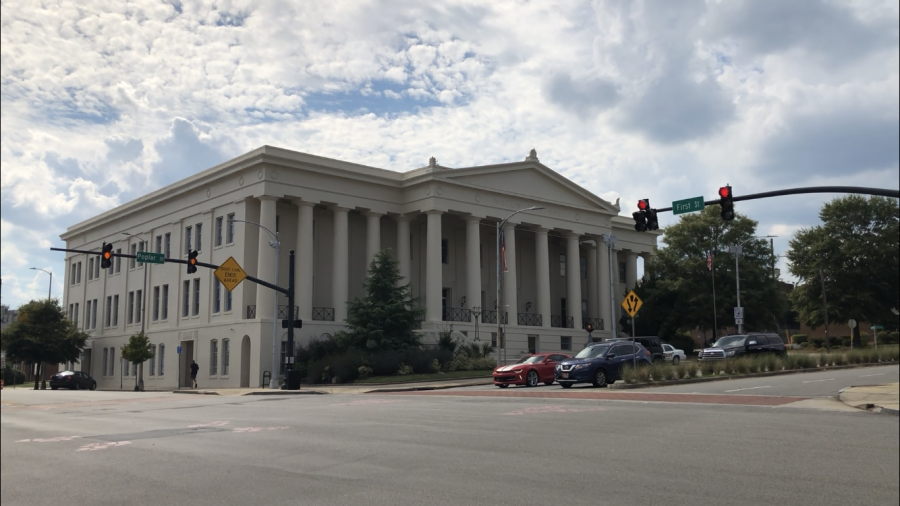Taleen Hanna, Mercer French student, traveled to San Diego for a service-learning project in November. Part of her individual project for her French for the Professions class was to write a story about the experiences of asylum-seekers at the U.S.-Mexico border to share with the Macon community.
AT THE BORDER
The San Ysidro border stretches from San Diego, CA to EL Centro, CA and has three U.S. ports of entry and four Mexican ports of entry. The area known as Whisky 8 is the only site along the San Ysidro stretch where Border Patrol allows volunteers to set up tents full of clothes, food, water, and other supplies to give to asylum-seekers on the other side of the U.S. border wall.
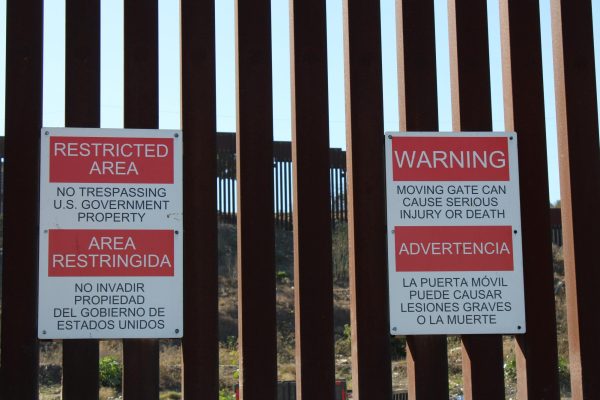
Asylum-seeker are in the middle area between the two U.S. walls and are not provided food or water from Border Patrol or any other government agency.
Mandy, who is a volunteer at the Whisky 8 site and did not want her last name to be shared, was preparing for a day of offering food and water to asylum-seekers. There was already a family from Pakistan on the other side of the U.S. wall. Mandy and other volunteers had passed tarps to the other side so the family could retreat under the makeshift shade. The warm days and cold nights in San Diego cause a lot of travelers to contract illnesses. On top of that, individuals and families might have to wait days to be picked up by Border Patrol to be processed.
“You’ve got people who are coming over here who are sick, who have no money, who want to work, who want to be a part of this country and help build this country like all of us, who are also descendants of immigrants. Nonprofits and mutual aid groups and just regular community members are handling an international crisis out of their kitchens,” Mandy says.
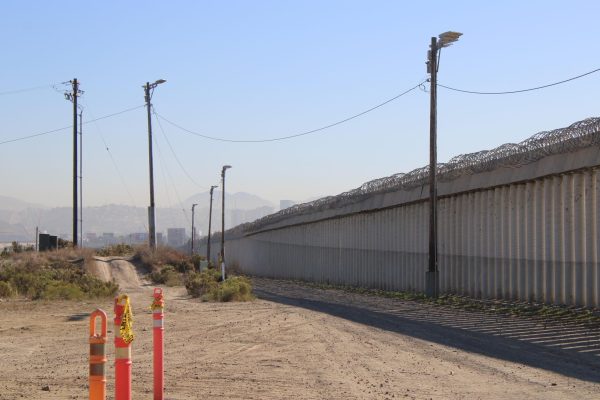
BEFORE THE BORDER
Migrants from across the world come to the U.S.- Mexico border seeking protection from persecution in their country of origin. Individuals who are granted refugee status before arriving at the border enjoy legal protections in the U.S. that asylum-seekers– those who are awaiting a decision on refugee status– do not receive.
There are two ways for asylum-seekers to ask for asylum: the CBP (U.S. Customs and Border Protection) One app or through the ports of entry.
CBP One allows asylum-seekers to upload their information and wait to be granted an appointment with an agent. The app is only in English, Spanish, and Creole and requires an up-to-date phone for the app to work properly. Part of the app requires Face ID, but it did not recognize faces with a darker skin tone, according to Jessica Aguilar, Ph.D. Candidate in Literature at UC San Diego. Asylum-seekers who do not understand those languages, don’t have a current phone, or cannot read or write are unable to utilize CBP One because of these barriers.
Asylum-seekers from across the world who either don’t know about CBP One or are escaping from immediate danger and don’t have time to use the app go through the ports of entry instead. At the ports of entry, asylum-seekers present their passports and meet with border agents to ask for an appointment to be granted asylum-seeking status.
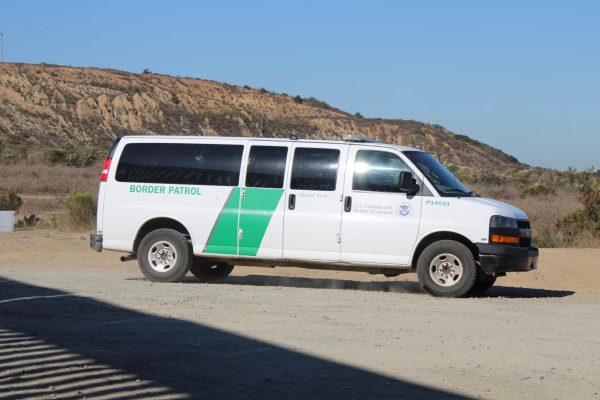
AFTER THE BORDER
Wait times for appointments can range from three to seven months. At these appointments, asylum-seekers are interviewed, and agents determine if they have a valid fear of returning home.
“That’s also re-traumatizing for a lot of folks who have to retell their story, or how to remember that violence that they had to face. So, we see the nuances and challenges that these communities have to face,” Jessica Aguilar, Ph.D. Candidate in Literature at UC San Diego says.
Aguilar worked at a shelter for unaccompanied minors, conducting family reunifications of migrant youth from Central American backgrounds. In her role as case manager, Aguilar saw the barrier that language differences caused and wanted to highlight those voices that matter through literature.
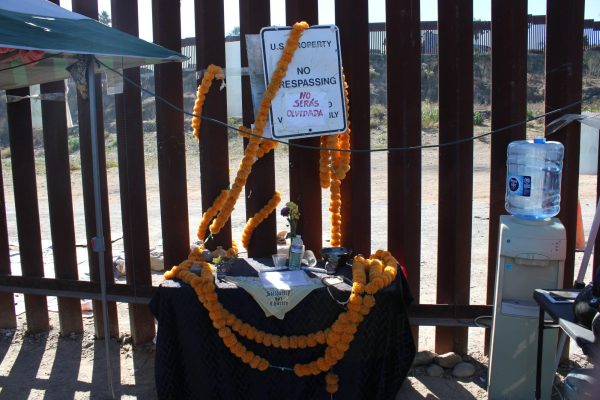
She has been working with migrant communities in various capacities since 2016 and has seen immigration policies become more dangerous.
“Now more than ever before, people are dying as they attempt to cross the desert,” she says.
Asylum-seekers are either given permission to stay in the U.S. or they are removed. Organizations like Church World Services, Haitian Bridge Alliance, and others give asylum-seekers a space where they can stay for up to eight hours.
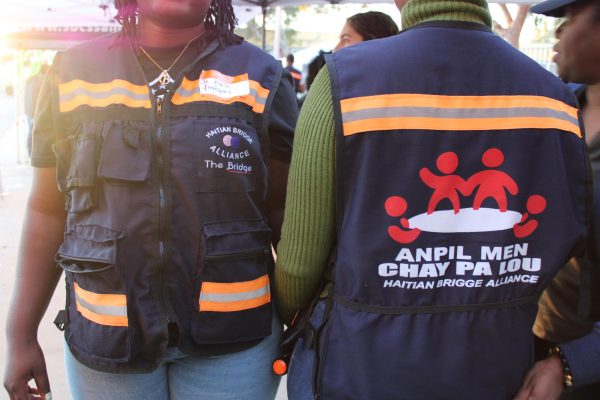
In El Centro, they can use Wi-Fi to call their families and receive help booking the correct flight or bus ticket to reach the location where their sponsor lives. One asylum-seeker, from Burkina Faso in Africa, flew to Brazil, then walked and swam to get to San Diego. After a month-long journey, he was able to utilize the facility to shower, get new clothes, and take the carpool bus to the airport.
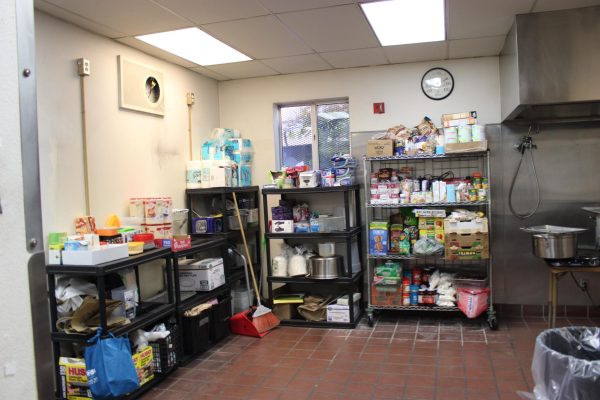
“A lot of these groups that we have been seeing don’t know that they’re in San Diego. They don’t know how to get where they have to go, and a lot of them don’t have resources,” Aguilar says.
Aguilar says that asylum-seekers are a mix of individuals from a multitude of different situations who never imagined having to leave their country.

“Asylum-seekers come from different backgrounds, and I think something that people don’t recognize is that there are doctors, entrepreneurs, professors, highly educated people also seeking asylum in the U.S. because the conditions in their countries of origin have pushed them out,” she says.
Asylum-seekers around the world go to the San Ysidro border seeking a safe place but face various barriers before the border, at the border, and after the border.




